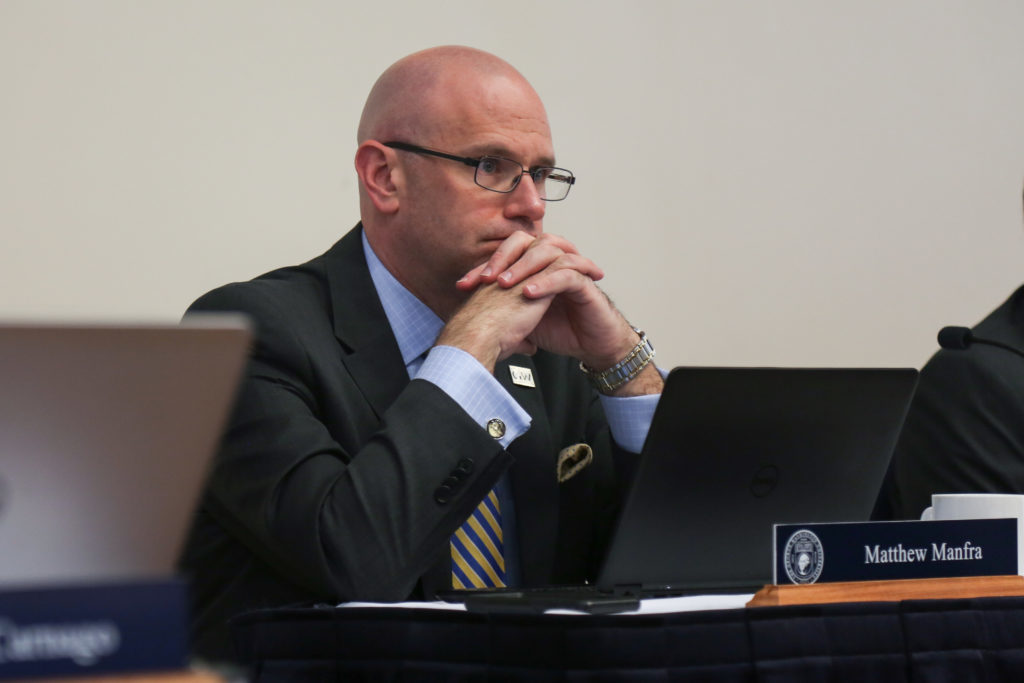Schools across the University now have at least seven openings in high-level development positions, nearly all of which have been vacated as previous staff have left the University in recent months.
The vacancies mean many individual schools are without senior fundraising officials as the University contemplates it’s next development moves following the success of the $1 billion campaign. Experts said it is not uncommon for staff to depart following a major fundraising push as talented development officials are recruited by other institutions.
Officials in the Columbian College of Arts and Sciences are searching for an assistant director of development, a job that has been open since September, according to GW’s jobs website.
There hasn’t been a director of development for the School of Media and Public Affairs since at least 2014, according to the school’s website.
The College of Professional Studies and the School of Medicine and Health Sciences are both searching for development directors – jobs available since last month. SMHS also posted job openings last month for an associate development director and a director of institutional giving, according to the jobs website.
The Elliot School of International Affairs is also seeking to fill an associate development director role.
Matt Manfra, the interim vice president for development and alumni relations, said open jobs are “back fills of existing positions” in individual schools and not new positions. He said the University’s central fundraising office, the Division of Development and Alumni Relations, works closely with development staff in individual schools on fundraising and alumni engagement.
“There is a high degree of coordination among staff working in development and alumni relations, whether they are located in the schools, units, or centrally,” he said in an email.
Manfra declined to say what impact the vacant positions in fundraising offices have on the University’s fundraising operation or how the office is mitigating any negative impacts.
The openings come at a time when officials are evaluating the performance of fundraising efforts in each school during the $1 billion campaign. Schools set individual goals as part of the campaign, but officials have declined to release how much each school raised.
Experts said change is not unusual in development offices after a major fundraising drive like the $1 billion campaign. Last June, the University finished the largest fundraising effort in history, raising more than $1 billion for priorities across the University.
Last year, as officials closed in on the campaign goal, the University’s central fundraising office made a flurry of hires – seeking to fill 13 positions.
Brian Lacy, the president of Brian Lacy and Associates, a non-profit consulting firm specializing in fundraising, said development positions often open up after a large campaign, but universities should try to get people in those positions as soon as possible to build consistent relationships with key donors.
Universities need to build ties between fundraisers and donors if they want to attract sustained donations, he said, and people in development offices should be as consistent as possible in order to cultivate those relationships.
“People who make million-dollar-plus gifts, they typically do not give one gift and then stop giving,” he said.
Effective fundraisers are fought over in the non-profit world because fundraising is such a critical need for many organizations. At the end of a big campaign, talented fundraisers may have many offers from other universities starting their own campaigns, he added.
Lacy said universities tend to prioritize hiring for development positions in law schools or medical schools, where alumni tend to earn higher salaries and are more likely to make substantial donations.
J. Michael Gilbreath, the associate vice president of planning and operations at Brandeis University, said after a major campaign, universities can make changes like hiring staff to strengthen fundraising for a future campaign.
“If you do a campaign right, you change a plateau in the level that you generate at,” he said. “Going into that campaign, doing the backend retail work, bringing in new donors, there’s a lot of staff time and effort needed to sustain that.”
Increasing the amount a university is fundraising, means that more staff is probably needed, he said.
Last fiscal year, the University raised roughly $117 million, a more than 20 percent increase from fiscal year 2016.
Paul Prokop, the associate vice chancellor for development at the University of California, Davis, said after campaigns, development offices can re-evaluate their staff and decide whether they need to make hires in certain areas.
“Typically you have staff augmentation because there is an indication that additional potential exists,” he said. “That is how you tend to be fairly strategic.”
He added that development offices are usually looking to grow their staffs, especially if they want to ramp up their fundraising efforts.
“Typically in programs such as ours, there is usually a far greater need for development staff than what you have,” he said.





